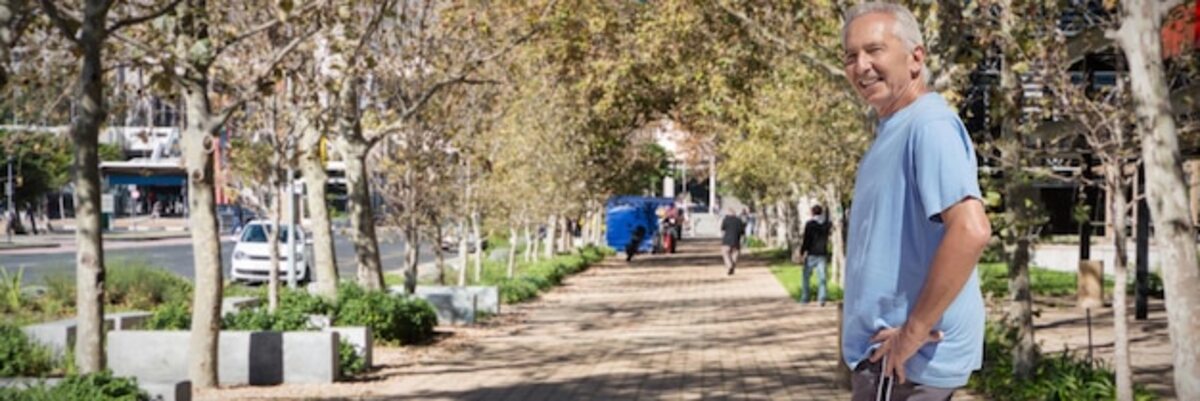Urban spaces that invite coexistence and well-being

In a world where urban life can become overwhelming, spaces that promote coexistence and well-being are more essential than ever. These places not only foster social interactions but also enhance our quality of life by connecting communities in pleasant and accessible environments. In this article, we will explore how certain urban spaces can transform into havens for collective enjoyment, promoting a fuller and healthier life. Join me in discovering these oases of well-being amid the hustle and bustle of the city!
1. The importance of urban planning in community well-being
Urban planning plays a crucial role in community well-being, as it lays the groundwork for the creation of inclusive and accessible spaces that foster social interaction. Thoughtful urban design can transform desolate areas into vibrant hubs of activity where residents feel motivated to leave their homes and engage in community life. By integrating parks, plazas, pedestrian paths, and bike lanes into the fabric of the city, environments conducive to gathering and collective enjoyment are created, thereby strengthening bonds between neighbors and promoting a sense of belonging.
Moreover, proper planning not only considers recreational spaces but also factors such as mobility, safety, and environmental sustainability. By prioritizing these characteristics, cities can provide a healthy environment that promotes active lifestyles and reduces the stress associated with urban overwhelm. Well-designed spaces allow people to enjoy the outdoors, engage in physical activities, and participate in local cultural events, all of which contribute to the overall well-being of the community. Ultimately, effective urban planning is essential for cultivating resilient and connected communities that thrive in harmony with their surroundings.
2. Parks and green areas: the lungs of our cities
Parks and green areas stand as true lungs of our cities, offering a breath of fresh air amid urban hustle. These spaces not only beautify the landscape but also serve vital functions for environmental and social health. By providing areas for recreation and leisure, they allow citizens to escape daily stress, promoting a more active lifestyle. Walking, running, or simply sitting to enjoy nature are activities that contribute positively to the physical and mental well-being of individuals.
Additionally, parks serve as meeting points where interpersonal and community connections are forged. In these inclusive environments, families, friends, and strangers can share experiences, engage in cultural activities, or simply enjoy the outdoors together. This social interaction not only strengthens the community fabric but also fosters a sense of belonging and cohesion among city residents. Thus, green spaces become conducive settings for cultivating friendships and creating meaningful memories in a healthy and relaxing atmosphere.
3. Public spaces: catalysts of social interaction
Public spaces play a fundamental role in creating vibrant and cohesive communities. Parks, plazas, and pedestrian areas are venues where people gather, share experiences, and establish meaningful relationships. These places not only serve as meeting points but also foster a sense of belonging and community by allowing individuals to interact in a relaxed and accessible environment. The diversity of activities that can be carried out in these spaces, from picnics to outdoor concerts, contributes to greater social interaction among neighbors and visitors, thereby promoting emotional and mental well-being.
Moreover, public spaces act as catalysts for social inclusion by bringing together people from different backgrounds and lifestyles. In these spaces, everyone has the opportunity to participate in community events or simply enjoy the environment while walking or playing with their families. This interaction not only improves individual quality of life but also strengthens the social fabric by generating empathy and understanding among diverse groups. In this sense, investing in the proper design and maintenance of these spaces is essential to ensure they continue to be havens of coexistence where social interaction flourishes.
4. Inclusive design: creating spaces for everyone
Inclusive design is essential for creating urban spaces that truly invite coexistence. This approach seeks to eliminate physical and social barriers, ensuring that all people, regardless of their age, abilities, or backgrounds, can enjoy the environment. By incorporating accessible ramps, clear signage, and suitable resting areas, an atmosphere is achieved where everyone feels welcome. A space designed with inclusion in mind not only meets individual needs but also promotes interaction among different groups, creating a more cohesive and vibrant community.
Inclusive design goes beyond the physical; it is about fostering a sense of belonging. Spaces like parks and plazas should reflect the cultural and social diversity of their users through artistic elements, community activities, and adaptable furniture. This not only enriches the visitor's experience but also invites active participation in the maintenance and care of the place. By designing with inclusion as a central axis, environments are created where each person can feel like an integral part of the urban fabric, thus enhancing collective well-being and strengthening community ties.
5. The influence of urban art on peaceful coexistence
The influence of urban art on peaceful coexistence is a phenomenon that goes beyond simple aesthetics. Artistic interventions, such as murals and sculptures, not only beautify public spaces but also tell local stories and reflect the identity of communities. By incorporating art into urban environments, a sense of belonging is created among residents, fostering emotional connections that can reduce social tensions. This type of artistic expression invites reflection and dialogue, turning streets into true galleries where each work can be the catalyst for meaningful conversations among strangers.
Furthermore, urban art has the ability to transform forgotten or degraded places into focal points of social activity. Previously desolate spaces can be revitalized with color and creativity, attracting people from different backgrounds and ages who seek to enjoy the surroundings. These areas become settings for community events, exhibitions, or simply informal gatherings, thus promoting a culture of peaceful coexistence. In this sense, urban art not only beautifies; it acts as a bridge that connects people and fosters an environment conducive to mutual respect and collaboration in building a more cohesive community.
6. Sports spaces: promoting an active lifestyle
Sports spaces in urban environments are essential for promoting an active and healthy lifestyle among their inhabitants. By integrating courts, tracks, and outdoor exercise areas, a conducive environment is created for people to gather and engage in physical activities, whether playing soccer, practicing yoga, or running. These spaces not only provide the opportunity to exercise the body but also promote socialization and teamwork, strengthening community ties through sports. The chance to share moments of fun and physical challenge helps build a more united and resilient community.
Additionally, the inclusion of accessible sports facilities contributes to the reduction of sedentarism in the urban population. When people have easy access to places where they can engage in physical activity, they are more likely to adopt healthy habits as part of their daily routine. The presence of these areas can also inspire those who may not be familiar with regular exercise, providing them with a safe and motivating space to begin their journey towards an active life. In this sense, sports spaces are true catalysts for overall well-being, promoting not only physical health but also mental well-being by offering escapes from daily stress in an increasingly hectic urban environment.
7. Local markets: fostering trade and community connection
Local markets have become epicenters of community life, where social interaction flourishes and commerce becomes an enriching experience. These spaces not only offer fresh and artisanal products but also create an environment conducive to meeting neighbors. By visiting a local market, people have the opportunity to meet producers, exchange ideas, and strengthen ties, contributing to a sense of belonging and social cohesion. The diversity of offerings in these markets reflects the cultural richness of the area, becoming a celebration of community identity.
In addition to promoting local commerce, markets are ideal settings for cultural activities such as concerts, workshops, and food fairs. These initiatives not only attract more visitors but also promote local talents and create opportunities for emerging artists. By integrating playful elements into their programming, markets foster a festive atmosphere that invites families to spend time together outdoors. In this way, they become vibrant spaces where community life is celebrated and collective well-being is encouraged, demonstrating that commerce can be a powerful tool for human connection in urban environments.
8. Walkability and bike lanes: rediscovering sustainable mobility
Walkability and bike lanes are essential components for rediscovering sustainable mobility in our urban environments. By prioritizing walking and cycling, carbon emissions are not only reduced, but a healthier lifestyle is also promoted. These spaces invite citizens to explore their neighborhoods, encourage physical activity, and enjoy the outdoors, all while strengthening community connections. With safer and more accessible streets, cities can become places where coexistence thrives, allowing for casual encounters and creating a sense of belonging among residents.
Additionally, the implementation of well-designed bike lanes can radically transform our experience as pedestrians and cyclists. By providing direct and protected routes, more people are encouraged to opt for these alternative modes of transportation over the car. This not only reduces traffic and improves air quality, but also fosters a culture of mutual respect among different users of public roads. Ultimately, this approach towards more sustainable mobility benefits not only the environment but also enhances social well-being by creating vibrant environments where everyone can fully enjoy urban space.
9. Cafés and squares as epicenters of social gathering
Cafés and plazas are more than just simple places to enjoy a cup of coffee; they have become true epicenters of social gathering. These spaces, carefully designed to be welcoming and accessible, invite passersby to stop, relax, and connect with others. In an environment where life can be hectic, these meeting points offer a respite, allowing friends to gather, families to enjoy time together, and strangers to engage in unexpected conversations. The arrangement of urban furniture, the presence of green areas, and the warm atmosphere contribute to creating a sense of community that strengthens social ties and fosters a healthier lifestyle.
Additionally, public squares often host cultural activities and community events that enliven the space and turn it into a vibrant place. From local fairs to outdoor artistic performances, these initiatives not only attract more people but also promote cultural exchange and diversity. Nearby cafes become natural extensions of these events, offering a place where visitors can relax between activities or simply enjoy the atmosphere while sharing ideas and stories. In this way, cafes and squares not only enrich urban life; they also play a fundamental role in building cohesive communities where everyone feels welcome.
10. The role of cultural events in strengthening the social fabric
Cultural events play a crucial role in strengthening the social fabric of urban communities. Through festivals, exhibitions, fairs, and artistic activities, a space is created where citizens can gather, share experiences, and celebrate their cultural diversity. These events not only provide entertainment but also promote inclusion and understanding among different social groups, allowing people to recognize each other as part of the same community. By participating in these activities, residents can develop a sense of belonging and pride in their environment, contributing to a more cohesive society.
In addition to enhancing interpersonal relationships, cultural events are economic drivers for cities. By attracting local visitors and tourists, they generate opportunities for entrepreneurs and local businesses. This economic dynamism can translate into improvements in urban infrastructure and the creation of more friendly public spaces. In this sense, cultural events not only enrich the social life of citizens but also act as catalysts for the sustainable development of their urban environments. Thus, investing in cultural initiatives strengthens not only the social fabric but also the ability of cities to adapt and thrive in a changing world.



